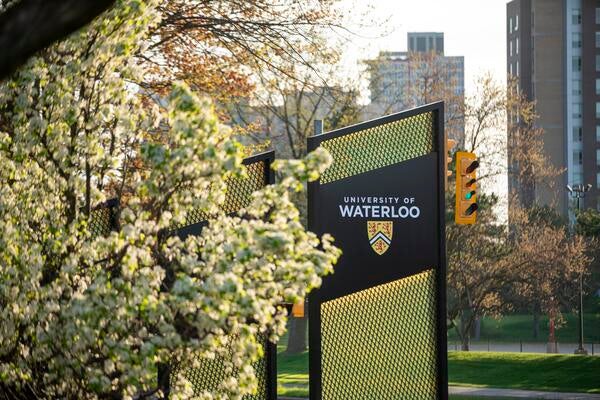
Women of the Nobel Prize for Physics
Donna Strickland becomes the first Canadian woman to be awarded the Nobel Prize for Physics

Donna Strickland becomes the first Canadian woman to be awarded the Nobel Prize for Physics
By Stephanie Longeway University RelationsWaterloo physics professor, Donna Strickland, has become one of only three women to ever win the Nobel Prize in physics. The last female to earn with this prestigious award was in 1963. Strickland is a pioneer in the development of lasers that has revolutionized areas of research in industrial and medical applications. Through her transformational research, she has also become a pioneer for women in science.
In response to this historical win, Strickland said,
We need to celebrate women physicists because they’re out there...I’m honoured to be one of those women.
Since 1901, the Nobel prize has been honouring outstanding men and women from around the world. The award is named after Alfred Nobel who established the prize through his final will and testament. When he passed in 1895, he directed that the bulk of his fortune should be divided into five parts and to be used for prizes in physics, chemistry, physiology or medicine, literature and peace to “those who, during the preceding year, shall have conferred the greatest benefit to humankind.”
The Nobel Prize has been awarded to 48 women between 1901 and 2018, with one woman, Marie Curie, winning twice. The Prize in Economic Science has also been awarded to one woman, Elinor Ostrom. Over a third of these awards were granted in the past two decades.

Prior to Strickland being recognized by the Swedish academy, only two women have been awarded with the Nobel Prize in Physics.
In 1903, Marie Curie won the Nobel Prize for her contribution and joint research on the radiation phenomena discovered by Professor Henri Becquerel. Currie later became the first woman to ever be awarded two Nobel Prizes when she was given the prize in Chemistry in 1911. As a young woman, Curie moved to Paris to study at the Sorbonne. In 1903, she received her doctorate of science and became the head of the physics laboratory at the Sorbonne. A few short years later, Currie accepted the position of Professor of General Physics in the Faculty of Sciences, becoming the first woman to hold this position. In 1914, she became the founding director of the Curie Laboratory in the Radium Institute of the University of Paris.
Maria Goeppert-Mayer was awarded the Nobel Prize in 1963 for her discovery in the nuclear shell structure. Her model has helped to define modern physics and what we understand about nucleons. Goeppert-Mayer received her doctorate in theoretical physics in 1930 from the University of Göttingen in Germany. She then moved to Baltimore with her husband to join him at John Hopkins University. The university would not hire her as she was the wife of a professor, but she continued her physics research as a passion project. It was there that Goeppert-Mayer met Karl Herzfeld who would become her research partner and share the Nobel Prize award. Goeppert-Mayer went on to become a well-respected professor of physics and a member of the National Academy of Sciences.
These remarkable women have been leading developments in physics over the past century. For Professor Strickland to join this exclusive club, it is a moment in Canadian history worth celebrating. Strickland commented that she did not have her sights set on winning a Nobel Prize with her research but is just happy to be paid to be a scientist. She noted that Goeppert-Mayer never got paid for the Nobel-worthy research she did. “Women have come a long way,” Strickland said. “We need to celebrate women physicists because we’re out there, and hopefully in time it’ll start to move forward at a faster rate.”

Read more
Here are the people and events behind some of this year’s most compelling Waterloo stories

Read more
Meet five exceptional Waterloo graduate students crossing the convocation stage as Class of 2025 valedictorians

Read more
The 2025 cohort represents some of the brightest new entrepreneurial minds in STEM
The University of Waterloo acknowledges that much of our work takes place on the traditional territory of the Neutral, Anishinaabeg, and Haudenosaunee peoples. Our main campus is situated on the Haldimand Tract, the land granted to the Six Nations that includes six miles on each side of the Grand River. Our active work toward reconciliation takes place across our campuses through research, learning, teaching, and community building, and is co-ordinated within the Office of Indigenous Relations.